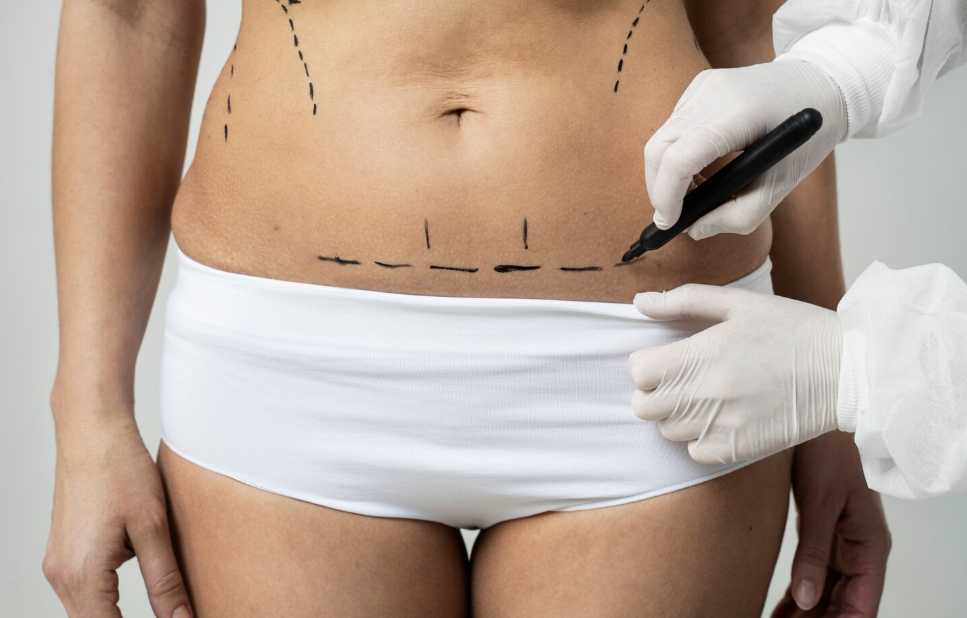Treatment Overview
An Upper Body Lift in Korea is a comprehensive body-contouring procedure designed to remove excess skin and fat from the upper back, chest, and sides of the torso, often extending to the arms or bra-line area. It is especially effective for patients who have undergone massive weight loss, resulting in sagging skin around the chest, underarms, and upper back. Unlike localized procedures, an upper body lift provides a 360° reshaping of the upper torso, restoring smoother contours and improved proportions.
Korean plastic surgeons are highly experienced in post-weight-loss body contouring, focusing on natural results and scar minimization. By combining advanced excision techniques with liposuction, they create a firmer, youthful upper body contour. Korea’s modern clinics also provide advanced scar-care therapies, 3D planning, and personalized aftercare, making it a top destination for upper body reshaping.
Purpose & Benefits
- Skin Tightening: Removes sagging skin from the upper back, chest, and torso.
- Fat Reduction: Eliminates stubborn fat deposits in the bra-line and flank areas.
- Improved Silhouette: Restores a toned, smooth appearance to the upper body.
- Functional Relief: Reduces discomfort from skin folds and chafing.
- Post-Weight Loss Transformation: Completes body reshaping after bariatric surgery.
- Confidence Boost: Enhances fit of clothing, especially fitted tops and swimwear.
Ideal Candidates
- Patients with loose skin around the upper torso after weight loss.
- Individuals with “bra rolls” or back fat that do not improve with diet or exercise.
- Adults in good overall health and at a stable weight.
- Non-smokers with realistic expectations.
- Post-bariatric patients seeking comprehensive torso refinement.
Possible Risks & Complications
- Temporary swelling, bruising, and soreness.
- Scarring (often along bra-line or upper back, but minimized with Korean techniques).
- Numbness or sensitivity changes in treated areas.
- Seroma (fluid buildup).
- Rare risks: infection, delayed wound healing, or asymmetry.
Surgical Techniques Used
- Bra-Line Upper Back Lift: Incision hidden along the bra line to remove excess skin.
- Lateral Chest Lift: Targets sagging skin at the sides of the torso.
- Arm & Chest Combination (Optional): Includes arm lift or chest contouring for complete reshaping.
- Liposuction (Optional): Removes stubborn fat for smoother transitions.
- Scar-Minimizing Closure: Fine sutures with advanced scar-care treatments.
Recovery & Aftercare
- 2–3 weeks: Swelling and bruising begin to subside.
- Compression Garments: Worn for 4–6 weeks to support healing.
- 1–2 weeks: Resume light daily activities and desk work.
- 4–6 weeks: Return to moderate exercise (avoid upper body strain early).
- 6–12 months: Final contour results visible; scars continue to fade.
Aftercare Guidelines:
- Wear compression garments consistently.
- Avoid strenuous upper body activity during early recovery.
- Keep incisions clean and dry to prevent infection.
- Use silicone gels, sheets, or laser therapy for scar care.
- Attend follow-up visits for contour and scar monitoring.
Results & Longevity
- Firmer, smoother upper body with improved contour.
- Permanent removal of sagging skin and fat.
- Natural, youthful proportions restored.
- Long-lasting results with stable weight and healthy lifestyle.
- Improved confidence in both fitted and casual clothing.
Treatment Process in Korea
- Initial Consultation & Assessment
- Surgeons evaluate upper torso skin laxity, fat deposits, and patient goals.
- Plan created to determine if an upper body lift alone or combined procedure is best.
- Surgical Planning & Preparation
- Incision mapped along bra line, upper back, or chest folds for discretion.
- General anesthesia typically used.
- Surgery Day
- Excess skin and fat removed from upper back, flanks, and chest.
- Optional liposuction and arm lift performed if needed.
- Closure with fine sutures for scar minimization.
- Post-Operative Monitoring
- Compression garment applied immediately.
- Some patients require an overnight hospital stay.
- Follow-Up & Refinement
- Follow-ups at 1 week, 1 month, 3–6 months, and 12 months.
- Scar management therapies provided for refinement.
Why Korea is a Top Destination
- Surgeons with specialized expertise in post-weight-loss body contouring.
- Advanced surgical methods to combine chest, flank, and back reshaping.
- Clinics equipped with scar-minimization technology and 3D imaging.
- Comprehensive aftercare programs for scar management and recovery.
- More affordable compared to Western countries, with world-class standards.
Cost Range
The cost of an Upper Body Lift in Korea depends on the degree of skin removal, whether liposuction or arm lift is included, and clinic expertise.
- Standard Upper Body Lift (Bra-Line): USD $8,000 – $11,000
- Extended Upper Body Lift (chest + back + flanks): USD $10,000 – $14,000
- Upper Body Lift + Arm Lift Combination: USD $11,000 – $15,000
- Premium Clinics (3D Imaging, VIP Aftercare, Advanced Scar Care): USD $12,500 – $18,000
Additional Costs:
- Consultation & imaging: USD $150 – $300
- Compression garments: USD $150 – $250
- Medications & aftercare: USD $200 – $400
Popular Clinics
- Banobagi Plastic Surgery (Seoul): Experts in post-weight-loss upper body reshaping.
- ID Hospital (Seoul): Known for bra-line and extended upper body lift procedures.
- JK Plastic Surgery Center (Seoul): JCI-accredited, premium safety and scar-care.
- View Plastic Surgery Clinic (Seoul): Leaders in torso contouring with liposuction combinations.
- JW Plastic Surgery (Seoul): Customized upper body lift surgeries with natural outcomes.




